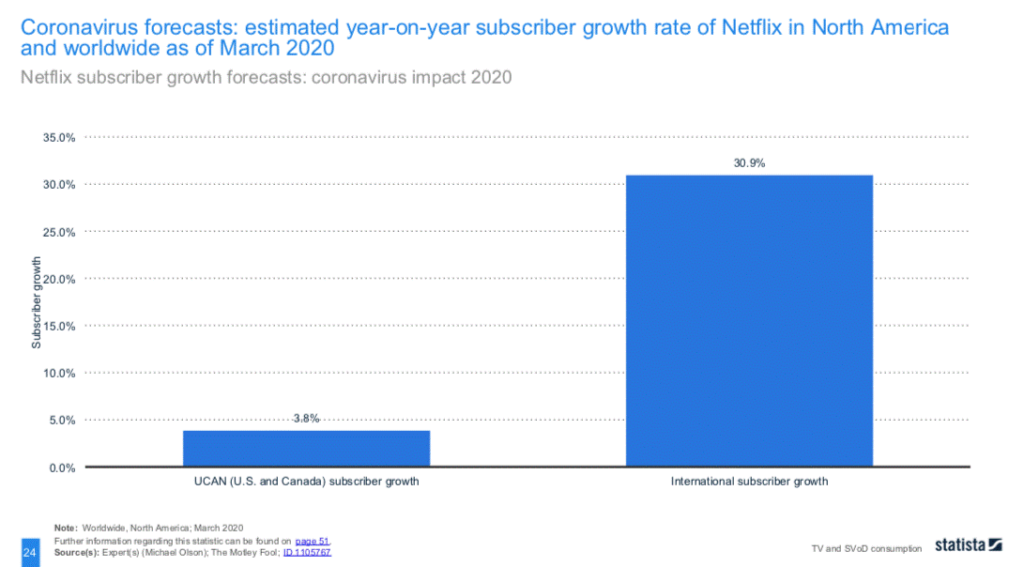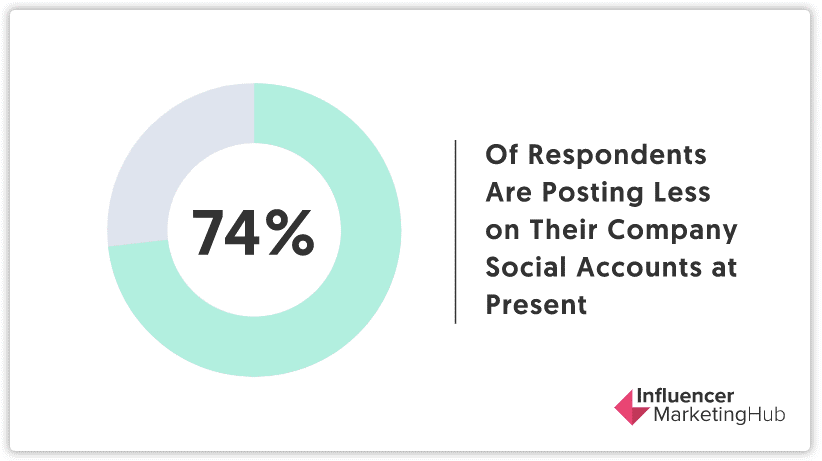30-second summary:
- Video is now ‘the new normal enabler’ connecting brands and customers when offline interactions are still far from reverting to normal. Videos are bridging the gap for informing, educating, engaging, entertaining, and socializing with customers.
- Low-budget videos are now the it-thing of the video marketing industry – they look nothing like ads or promotional videos customers are likely to skip.
- Companies are expected to join the global conversation and express what matters to people behind the brand. And videos are a great tool for touching upon this conversation and revealing what the brand stands for as mere “We’re all in this together” message will not cut it.
- Although not a new trend, the popularity of live streams has soared due to COVID-19. Yes, while WFH, people tend to get distracted with their devices and watch a live stream.
- Not only stock markets are up – stock footage is getting increasingly popular as real video shootings are temporarily on hold.
As we adjust to the new realities of a COVID-19 driven economy, both brands and consumers have changed the way they sell and buy. Keeping customers informed, connected, and cared for is the biggest challenge businesses are facing. Challenges bring new solutions, and video content is the biggest one in sight.
The rise of video is unprecedented – Cisco estimates that by 2022, 82% of all created content will be video. Yet, the COVID-19 pandemic has shuffled the cards and brought up significant shifts in people’s online behavior and purchasing patterns.
With an 80% rise in content consumption since the coronavirus pandemic, video watchtimes are expected to reach a 100-minute a day benchmark. But brands willing to invest in video should adapt their strategies to match the new customer and the so-called ‘new normal’.
The new consumer
With shelter-in-place, stay-at-home, WFH, and other COVID-19-related measures, what else is there to do but watch video content?
The pandemic has been the time of record highs for video consumption: Netflix reached 16 million new subscribers globally, Sky reported that ‘Bulletproof 2’ has exceeded 5.4 million downloads and All4 has seen audiences up 54% YoY.
Source: Statista
This may seem like an entertainment-only-related growth, but numbers say otherwise. With the sudden spike in people staying indoors and a total change in their lifestyle, consumers are now spending more time online than ever before.
The “buy online” search query has skyrocketed in March 2020, growing by 50% just within a month.
Source: SEMrush
Some brands have embraced the ‘sofa-surfers’ trend and started adapting branded video content to best match their needs. Despite the slowing economy and financial instability, people do go online and make purchases.
However, businesses should reconsider their video communication strategy as 43% of consumers are unhappy with the COVID-19 messaging they receive from brands.
How marketers respond to the brave new world
Video is now ‘the new normal enabler’ connecting brands and customers when offline interactions are still far from reverting to normal. Videos are bridging the gap for informing, educating, engaging, entertaining, and socializing with customers.
In business terms, videos allow marketers to engage, communicate, and retain customers as well as drive tangible results during (and probably long after) the COVID-19 pandemic.
Why is video the best thing to place a bet on? Marketing spend has been drastically cut: out-of-home advertising doesn’t make much sense now, yet even digital ad spend is down.
Source: SEMrush
With lower revenues, marketing budgets get cut, so limited resources encourage more and more marketers to consider video marketing that now requires fewer investments in production but brings more in return.
Although video was already on the rise before the pandemic, these extreme circumstances “forced” brands to reconsider their approach to some of the emerging video marketing trends that they were ignoring.
We highlighted some of the major “transformations” – different video marketing trends that businesses have adopted a lot more widely due to the lockdown.
How to adapt video content strategy to the new customer
As the crisis continues, businesses have to shift their marketing strategies to address the quarantine mode.
Minor or major, changes occurred across pretty much every aspect of the business: operation hours, brand-to-consumer communication, budget restrictions, product releases, and the overall planning.
So, besides ads and promo videos, video is now getting a stronger presence and broader use in customer care and support, direct communication with prospects, and educational means.
#1. Keeping production costs low
Working remotely has altered marketers’ approach to video creation. When thinking about video marketing, we were accustomed to employing camera crews, professional lighting and sound gear, and closely controlled sets.
What happened during the pandemic, more brands started getting used to the thought that they can do what vloggers have been doing all along – create short-form, amateurish videos that open up amazing opportunities for creative content production.
With new consumption habits and shorter attention span, new formats keep evolving and thriving.
Low-budget videos are now the it-thing of the video marketing industry – they look nothing like ads or promotional videos customers are likely to skip. This kind of production helps brands embrace some other growing trends and industry buzzwords:
- Authenticity
- Brand humanization
- Connectivity
With fewer brands being ready to invest in Hollywood-level productions (think Masterclass video teasers), even larger brands are now turning to “from-the-sofa-broadcasts”.
Example 1: GQ explaining how they shoot video with no makeup and cheap camera purchased during COVID-19
Example 2: McDonald’s doing a simple “face to the camera” explanatory video
With 74% of brands admitting they are posting less on their social accounts, there can be an opportunity here to grasp some share of voice from the competition.
Acknowledging that more laid-back videos are a big part of future marketing, brands can get an almost first-mover advantage over those who cannot imagine posting low-budget video content from official business accounts.
COVID-19 made it clear: better make videos with what you can and have right now or you may lose the audience.
Ed Lawrence’s comprehensive guide explains how to produce higher-quality videos for social media.
#2. Placing authenticity at the heart of brand communication
Brand loyalty doesn’t come easy. Companies are increasingly expected to act and feel like humans. And authenticity is at the heart of this trend.
Customers care about brands’ stance in regards to social and political issues, which was only highlighted at the peak of the #BlackLivesMatter movement or the #COVID-19 precautions.
Example: CB2 speaks about the immediate steps to support diversity and the Black Lives Matter movement
Edelman research shows that 65% of consumers say that brands’ reaction to the pandemic will affect their attitude towards their business/products. 33% admit to withdrawing from a brand that did not meet their expectations.
Companies are expected to join the global conversation and express what matters to people behind the brand. And videos are a great tool for touching upon this conversation and revealing what the brand stands for as mere “We’re all in this together” message will not cut it.
Example: Piada Italian Street Food’s simple stop-motion supporting the Pride month
Some brands are successfully employing a sense of humor while showing how they care about clients during and after the pandemic.
Example: Catch’s video with A-team parody
Many brands took a more personal and touching approach when speaking about challenges by reminding and celebrating good moments together with their customers.
Example: Father’s day video by Sweet Green Restaurant made from home
#3. Employing Live Streaming as one of the most cost-effective video formats
Although not a new trend, the popularity of live streams has soared due to COVID-19. Yes, while WFH, people tend to get distracted with their devices and watch a live stream.
Be it for utilitarian (during the pandemic, all the fitness workouts have been live-streamed in one way or another) or entertainment-only purposes, US streaming consumption grew by 73% from February to March 2020.
But brands have also benefited. Live streaming is a cost-effective way of communicating with the audience and building up engagement for:
- Educational purposes: Ecamm and Stephanie Liu online conference gathered over 6K attendees;
- Customer care and support: live Q&A’s, interviews, webinars;
- Connectivity and entertainment: bloopers, behind-the-scenes, funny work moments, etc.
#4. Showing real people behind the brand
People buy from people. A brand that shows that it does not only care about its service/product or customers but also about its employees has an edge over the competitors.
This is especially pressing during global pandemic times. Although this strategy requires staff to overcome stage fear, more and more companies show their employees and demonstrate that there are caring people behind each brand who are trying to do their best for others.
Example: British Gas teaching how to fix boilers while they can’t come to people’s houses
We can only carry out emergency repairs at the moment but our engineers can help solve some common problems, from their very own homes.
If you’ve no heating or hot water, here’s Natalie, who’ll show how to re-pressurise your boiler. Get in touch if you’re still having problems. pic.twitter.com/riXbbWgvO3
— British Gas (@BritishGas) May 6, 2020
#5. Embracing the rise of stocks
Not only stock markets are up – stock footage is getting increasingly popular as real video shootings are temporarily on hold.
To diversify social feeds and content delivered to the customers, stock footage is a great alternative to investing in high-end production at times when that’s not even an option for most companies.
Revealing internal Wave.video users data, we see that 79% of all ready-to-use (rendered) videos contain stock videos. And within the past 30 days, stock visual assets were used more than 92,300 times.
Example: Real estate agency Zillow using stock footage to share tips on how to survive the lockdown
Final Words
The current coronavirus crisis is only accelerating existing digital video transformation trends. With the new purchasing habits and lifestyle patterns, consumers expect brands to adapt to the changing realities and present new video formats that are both engaging and relatable.
Whether it’s about minor changes like using stock footage, creative leaps with livestream broadcasts, or fetching creative briefs for staff to film in their own homes, video content marketing is now getting an unprecedented edge over other marketing communication formats.
Daniel Glickman is an internationally recognized marketing leader, speaker, and author. As CMO of Wave.video, an innovative video marketing solution, he leads and manages digital marketing, advertising, and PR activities. His blog, newsletter, and podcast offer a frank, creative, and humorous take on the underbelly and undercurrents of today’s most pressing, exciting, and confounding marketing issues.
source https://www.clickz.com/adapting-to-the-new-normal-video-content-strategy-after-covid-19/262782/




 P R I D E
P R I D E  #catchrestaurants #catchla #ateam
#catchrestaurants #catchla #ateam
No comments:
Post a Comment